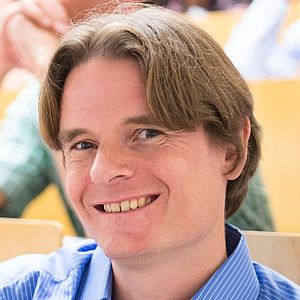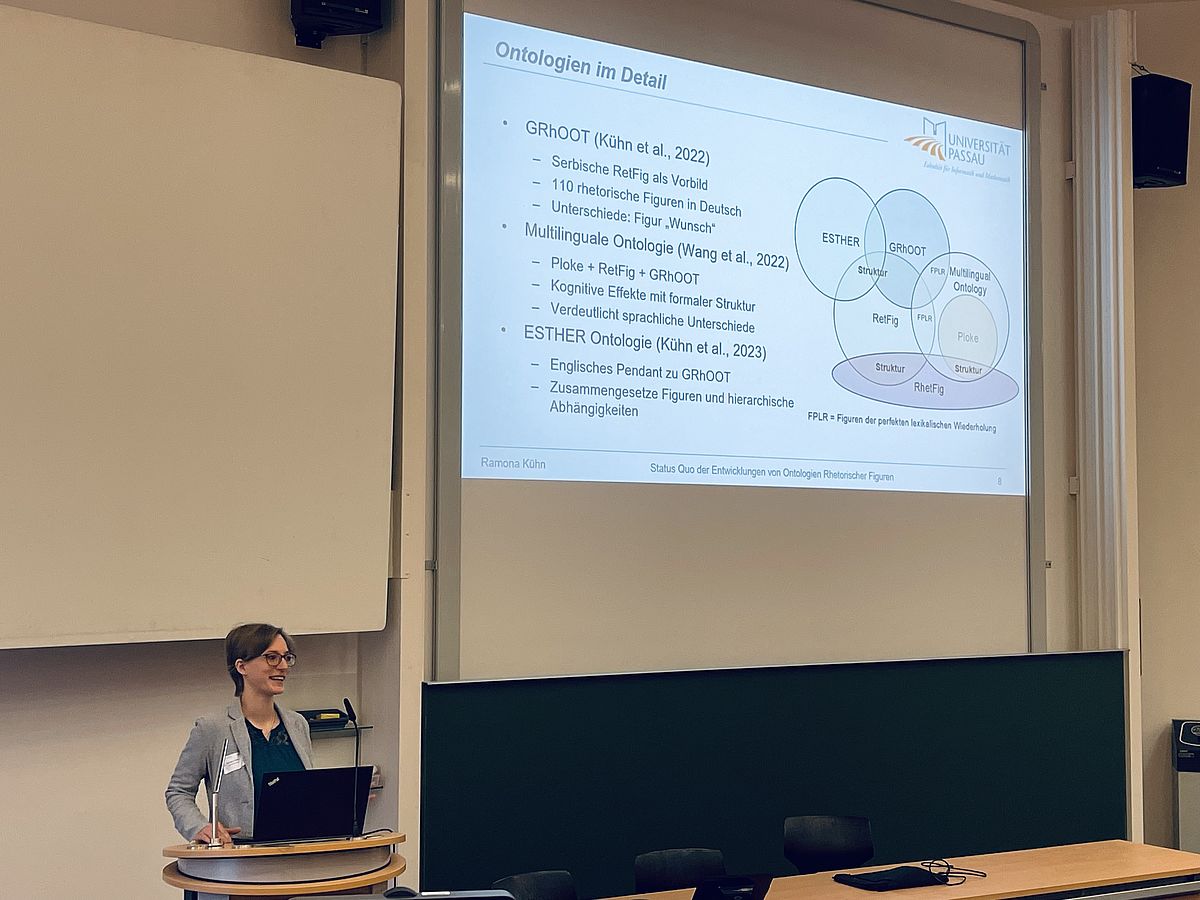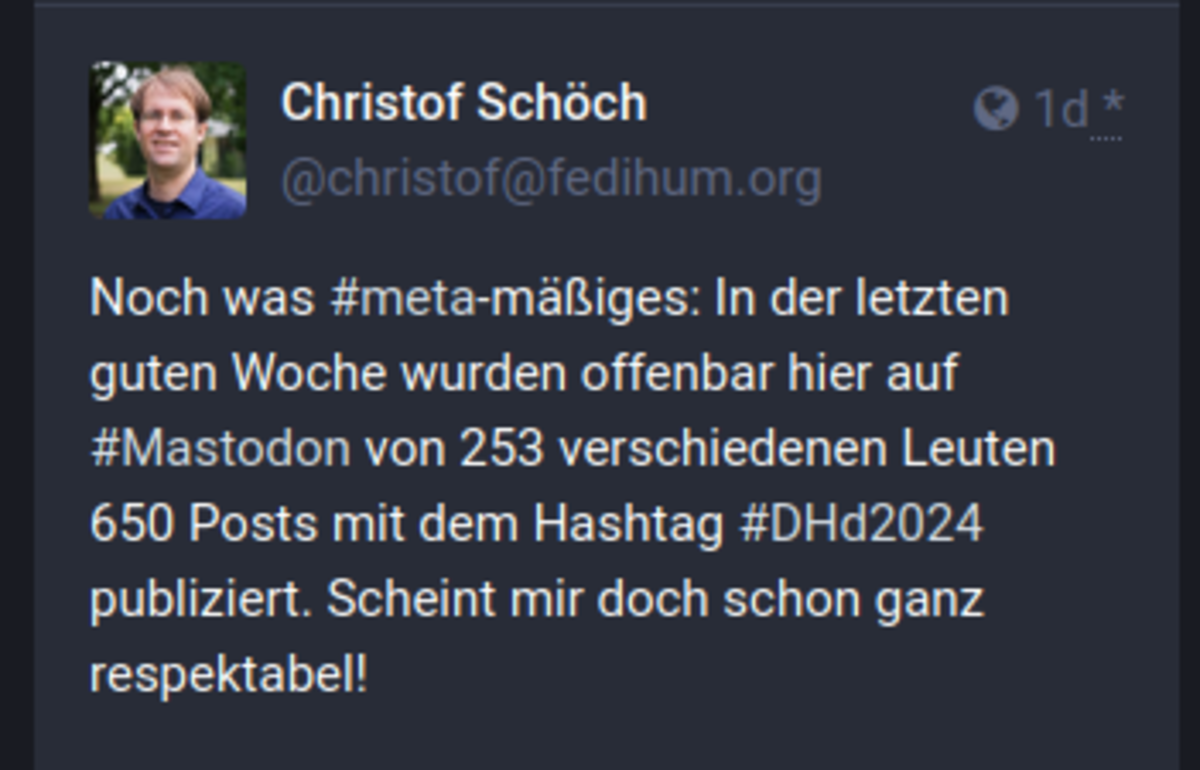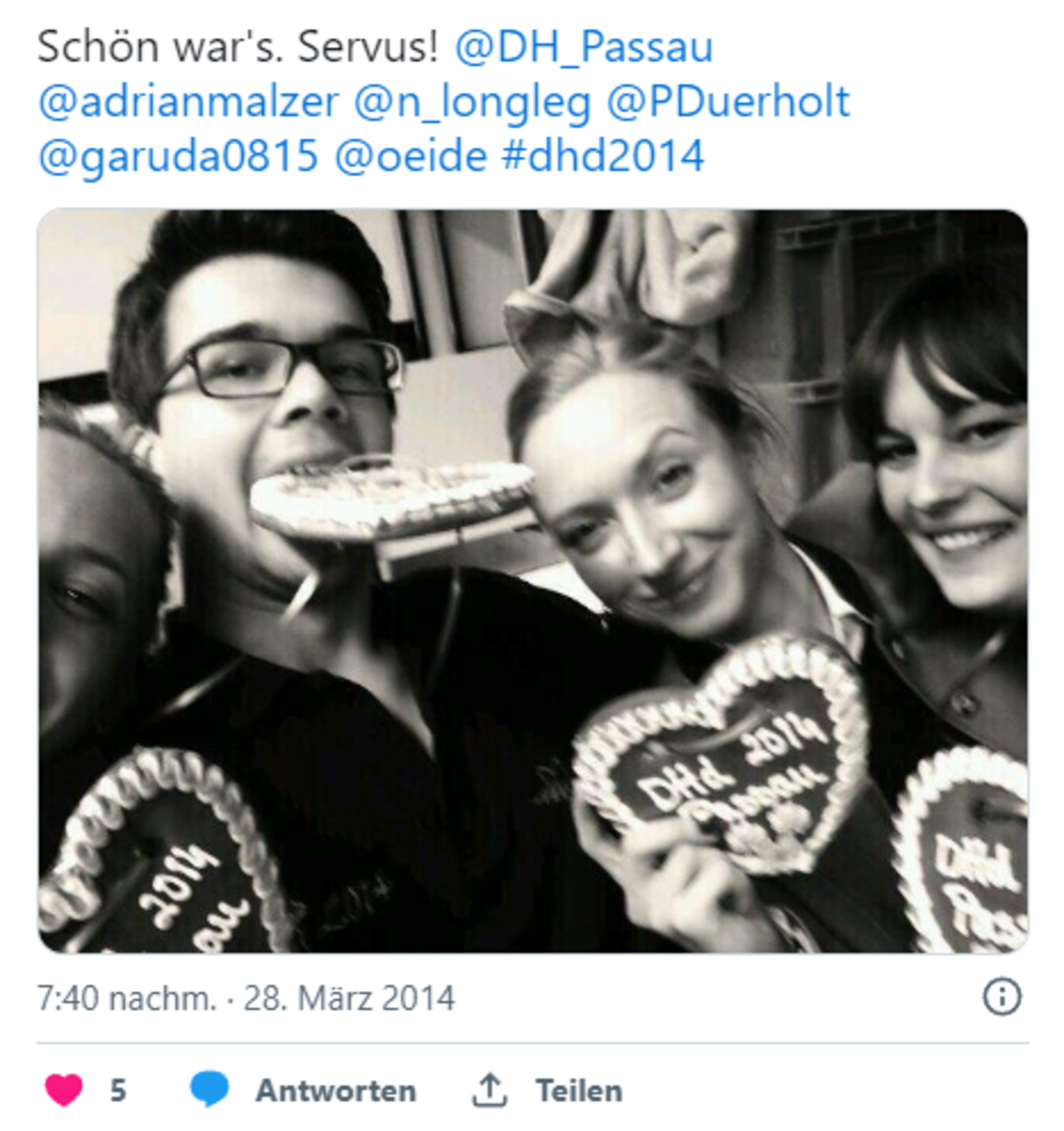Copyright: Network Digital Humanities at the University of Potsdam.
Ten years ago, the digital humanities were still worried about a hostile takeover by computer science. In February 2024, Malte Rehbein, Professor of Digital Humanities, asks the following question in the Audimax of the University of Passau: Should the digital humanities still be called that at all, or haven't all humanities become digital?
448 representatives of the discipline, including members of the association "DHd - Digital Humanities im deutschsprachigen Raum", came to Passau at the end of February for the conference "Quo Vadis Digital Humanities?" to discuss where the discipline stands in a technologised world. In a packed Audimax, President Professor Ulrich Bartosch welcomed the participants, who travelled from all over the German-speaking world, including Austria, Switzerland and Luxembourg, to Passau. A further 40 participants were connected digitally. The digital humanities play a major role, especially at a time when technological progress is changing the scientific knowledge process at an unprecedented speed. "Thank you for helping shape the future of science," said Professor Bartosch.
Passau celebrated a small anniversary as the venue. The first conference was held here in 2014. It was initiated by Professor Rehbein and his newly established Chair of Digital Humanities. He was delighted that he was able to bring the conference back to Passau for its tenth anniversary.
Professor Rehbein's chair was created as part of the Technik Plus development programme at the University of Passau. Since then, the field of Digital Humanities has grown at the University of Passau, most recently in connection with the Hightech Agenda Bayern, which included the establishment of the Chair of Multilingual Computational Linguistics. Chair holder Prof Dr Johann-Mattis List is now strengthening digital approaches in the humanities at the University of Passau. His chair also helped to organise the conference.
What else has happened in the past ten years? "Large language models have seen an enormous surge in development. These are powerful neural networks that are trained with huge amounts of data to analyse natural language and can even generate coherent texts. The machine now writes better than humans. One example of such a language model is GPT-4, which is behind ChatGPT.
Researching languages with the help of large language models
The Passau Chair of Multilingual Computational Linguistics is also experimenting with this. Dr Jessica Nieder, a research assistant, sees a lot of potential in these large language models for her own discipline: "Large language models help us to determine grammatical structures, perhaps also to discover new languages, but also simply to be able to examine languages more closely," she explains.
Computer scientist Ramona Kühn is also involved in analysing human language. In her doctoral thesis as part of the BMBF junior research group CAROLL at the University of Passau, whose topic she presented at the conference, she is looking for ways to teach machines to understand rhetorical figures.
Junior research group CAROLL: algorithms trained in rhetoric to combat hatred on the Web
Algorithms that Aristotle would have liked: a team at the University of Passau is developing an Artificial Intelligence system based on the ancient art of rhetoric. This AI system could be able to detect implicit insults on the Web, but also to recognize which of two legal arguments is the better.
Machines that understand sarcasm
She wants to enable the language models to recognise hate speech and fake news on the internet. "Because they often use sarcasm or irony," she says and has brought along an example: "As fast as a snail." The machine would not yet recognise the irony, but would infer from "fast" that the sentence was meant positively. However, the machine would have to be taught that snails are actually slow.
Although large language models are already able to understand a lot, they are not yet particularly good at recognising rhetorical figures, especially in languages other than English. To change this, Kühn has developed a German-language ontology in her dissertation, i.e. a formally organised representation of terms and specifications for rhetorical figures that the machine can work with. The CAROLL junior research group at the University of Passau is thus a leader in this field of research. Head Dr Jelena Mitrović was the first to create an ontology of rhetorical questions for the Serbian language with "RetFig". This serves as the basis for the work of Ramona Kühn and others:
The use of language models was one of many topics at the three-day conference, which comprised a total of 19 workshops, 43 presentations, 64 posters, 7 panels, 11 presentations in the Doctoral Consortium, a poster slam, a fisbowl panel discussion on the conference theme "Quo Vadis Digital Humanities" and two keynotes. The conference was largely organised by Dr Thomas Haider, research associate at the Chair of Digital Humanities: "DHd2024 was a complete success, and we are delighted with the many participants in Passau. The conferences of the DHd association are always a productive place where researchers from the fields of computer science and the humanities negotiate the identity of the discipline. Alongside other conferences such as the global Alliance of Digital Humanities Organisations conference, DHd has become one of the most important platforms for the digital humanities."
The keynote speech was given by Marco van Leeuwen, Professor of Historical Sociology and Social Sciences at Utrecht University, who analyses historical register data and occupational profiles with the help of computers to find out to what extent social advancement was possible in historical societies. Professor Michaela Mahlberg, PhD, from the University of Birmingham spoke at the end of the conference. She uses computer-aided, quantitative linguistic methods to analyse huge text corpora with regard to the social function of language.
Impressions on social media
The diversity of the discipline was also reflected in the contributions under the hashtag #DHd2024 on social media - from digital cultural heritage to automatic text recognition and media archaeology to computer-controlled puppet theatre. The main channel of this year's conference was on Mastodon. On the left in the picture, the second chairman of the association, Christof Schöch, is delighted with the lively activity of the participants on the microblogging service.
Professor Johann-Mattis List
How to compare the over 6 000 languages spoken around the world, and how do computer-based methods help?
How to compare the over 6 000 languages spoken around the world, and how do computer-based methods help?
Comparative Linguist Johann-Mattis List has held the Chair for Multilingual Computational Linguistics at the University of Passau since January 2023 and heads the ERC-funded research group "ProduSemy". Before that, he served as stand-in professor at Bielefeld University and as senior researcher at the Max Planck Institute for Evolutionary Anthropology in Leipzig and the Max Planck Institute for the Science of Human History in Jena where he headed another ERC-funded research group on computer-assisted language comparison. Professor List earned his doctorate at the Heinrich Heine University in Düsseldorf and wrote his habilitation at the Friedrich Schiller University in Jena.

Professor Malte Rehbein
How can historical sources be digitalised and assessed with the assistance of computers?
How can historical sources be digitalised and assessed with the assistance of computers?
Professor Malte Rehbein has held the Chair of Digital Humanities at the University of Passau since 2013. He is a member of both the board of Digital Humanities in German Speaking Countries and the Scientific Advisory Board of Deutsches Museum.










